
The Majestic Wilderness of Velka Fatra National Park
Explore the unspoiled beauty of Velka Fatra National Park in Slovakia, where lush forests, scenic trails, and diverse wildlife await nature enthusiasts.
Velka Fatra National Park, located in the heart of Slovakia, is a natural gem waiting to be explored. With its dense forests, rolling meadows, and rugged peaks, the park offers a serene escape from city life and a chance to reconnect with nature. The park covers a vast area, providing diverse landscapes that cater to hikers, nature lovers, and adventure enthusiasts alike. In spring and summer, the park blossoms with wildflowers, creating a vibrant tapestry across its meadows. The network of well-marked trails guides visitors through enchanting woodlands, along bubbling streams, and up to panoramic viewpoints. One of the park's highlights is the Krížna peak, which offers breathtaking views of the surrounding mountains and valleys. Autumn in Velka Fatra is a spectacle of colors, as the leaves turn various shades of red, orange, and yellow. This season is perfect for photographers and those who enjoy peaceful walks in cooler weather. Winter transforms the park into a wonderland for snowshoeing and cross-country skiing, with snow-covered trees and pristine paths. Velka Fatra is also rich in wildlife. Keep an eye out for deer, foxes, and even bears. Bird watchers will be delighted by the variety of species, including the rare Western Capercaillie. The park's unique flora and fauna make every visit a new adventure, with something special to discover at every turn.
Local tips in Velka Fatra National Park
- Visit in different seasons to experience the park's changing beauty.
- Bring proper hiking gear; some trails can be challenging.
- Check local weather forecasts before your trip for a safe visit.
- Respect the park's wildlife; maintain a safe distance and do not feed animals.
- Consider hiring a local guide to explore less-known trails and spots.
The Majestic Wilderness of Velka Fatra National Park
Velka Fatra National Park, located in the heart of Slovakia, is a natural gem waiting to be explored. With its dense forests, rolling meadows, and rugged peaks, the park offers a serene escape from city life and a chance to reconnect with nature. The park covers a vast area, providing diverse landscapes that cater to hikers, nature lovers, and adventure enthusiasts alike. In spring and summer, the park blossoms with wildflowers, creating a vibrant tapestry across its meadows. The network of well-marked trails guides visitors through enchanting woodlands, along bubbling streams, and up to panoramic viewpoints. One of the park's highlights is the Krížna peak, which offers breathtaking views of the surrounding mountains and valleys. Autumn in Velka Fatra is a spectacle of colors, as the leaves turn various shades of red, orange, and yellow. This season is perfect for photographers and those who enjoy peaceful walks in cooler weather. Winter transforms the park into a wonderland for snowshoeing and cross-country skiing, with snow-covered trees and pristine paths. Velka Fatra is also rich in wildlife. Keep an eye out for deer, foxes, and even bears. Bird watchers will be delighted by the variety of species, including the rare Western Capercaillie. The park's unique flora and fauna make every visit a new adventure, with something special to discover at every turn.
When is the best time to go to Velka Fatra National Park?
Iconic landmarks you can’t miss
Jánošíkove Diery
Explore the breathtaking natural beauty of Jánosíkove Diery, a premier hiking destination in Slovakia's stunning Malá Fatra National Park.

Malá Fatra National Park
Experience the breathtaking beauty of Malá Fatra National Park, a natural gem in Slovakia perfect for hiking, wildlife watching, and cultural exploration.

National Park Great Fatra
Explore the breathtaking landscapes and rich biodiversity of National Park Great Fatra, a must-visit destination for nature lovers in Slovakia.

Veľká Fatra National Park
Explore the breathtaking landscapes and diverse wildlife of Veľká Fatra National Park, a must-visit destination for nature lovers in Slovakia.

Šútovský waterfall
Explore the stunning Šútovský Waterfall in the heart of Slovakia's Malá Fatra National Park, where nature's beauty awaits every visitor.

Horné diery
Explore the stunning Horné diery gorge in Mala Fatra, Slovakia, a perfect destination for hikers and nature lovers seeking breathtaking landscapes.
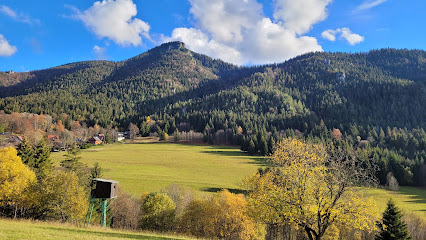
Castle Sklabiňa
Explore the enchanting Castle Sklabiňa, a historical gem in Slovakia offering stunning architecture and serene landscapes perfect for all travelers.

Malá Fatra
Discover Malá Fatra, Slovakia's hidden gem of natural beauty, offering breathtaking landscapes, thrilling hikes, and peaceful retreats for nature lovers.

Správa Národného Parku Malá Fatra, Varín
Discover the breathtaking landscapes and rich biodiversity of Malá Fatra National Park, a haven for nature lovers and adventure seekers in Slovakia.

Veľká Fatra
Experience the breathtaking beauty and tranquility of Veľká Fatra, Slovakia's stunning mountain range perfect for outdoor activities and nature exploration.
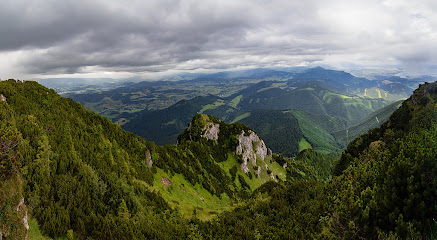
Unmissable attractions to see
Low Tatras National Park
Explore the breathtaking landscapes and outdoor adventures at Low Tatras National Park, a must-visit destination for nature lovers and thrill-seekers in Slovakia.

Jánošíkove Diery
Discover the breathtaking landscapes of Jánošíkove Diery, a top Slovak hiking area offering stunning views and thrilling adventures in nature.

Vlkolínec (UNESCO)
Experience the charm of Vlkolínec, a UNESCO World Heritage Site in Slovakia, with its stunning wooden houses and rich cultural heritage.

Jasna Low Tatras
Explore Jasná Low Tatras, a premier ski resort and hiking area in Slovakia, offering breathtaking views and thrilling outdoor adventures year-round.

Malino Brdo ski & bike park
Discover the thrill of skiing, biking, and hiking at Malino Brdo Ski & Bike Park, a top outdoor destination in Slovakia.

Šútovský waterfall
Explore the stunning Šútovský Waterfall, a natural wonder in Slovakia perfect for nature lovers and adventure seekers.

Museum of the Slovak Village
Explore the Museum of the Slovak Village for an unforgettable journey through Slovakia's rich cultural heritage and traditional village life.

Horné diery
Explore the breathtaking trails and stunning landscapes of Horné diery, a hidden gem in Slovakia that promises adventure and tranquility.

Obrovo
Experience the thrill of Obrovo, Ružomberok's premier amusement park, where family fun and adventure come together for an unforgettable day.

Castle Sklabiňa
Explore the enchanting Castle Sklabinya in Sklabinský Podzámok, an awe-inspiring historical site filled with culture, stunning views, and rich heritage.

Náučný chodník Čutkovská dolina, známa – neznáma
Explore the serene beauty of Cutkovská Valley Trail, a hidden natural paradise in Slovakia perfect for hiking and nature lovers.

Jelení vodopád
Explore the breathtaking Jelení vodopád in the Cutkovská Valley, a natural wonder perfect for nature lovers and adventure seekers visiting Slovakia.

Zrúcanina Blatnického hradu
Explore the stunning ruins of Zrúcany Blatnického hradu, a historical gem offering breathtaking views and rich cultural heritage in the heart of Slovakia.

Blatnická Dolina
Explore Blatnická Dolina, a serene hiking paradise in Slovakia, where breathtaking views and nature's tranquility await every traveler.

Teplické serpentíny
Discover the breathtaking beauty of Teplické serpentíny, a natural wonder in Slovakia that offers adventure, stunning views, and geological intrigue in one captivating location.
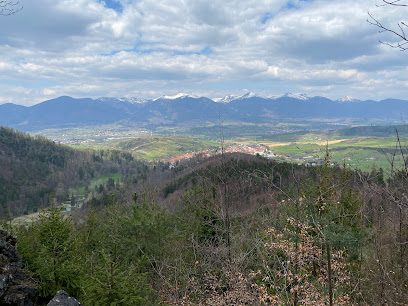
Essential places to dine
Malá Fatra National Park
Explore the breathtaking landscapes and diverse wildlife of Malá Fatra National Park - a true Slovakian gem for nature lovers.

Koliba u Dobrého pastiera - penzión a reštaurácia
Discover authentic Slovak cuisine amidst breathtaking landscapes at Koliba u Dobrého pastiera - a perfect blend of tradition and nature.

Jánošíkova koliba
Discover authentic Slovak cuisine at Jánošíkova Koliba in Terchová - where tradition meets taste amidst breathtaking mountain views.

Haluškáreň Terchová Restaurant & Accomodation
Experience authentic Slovak cuisine at Haluškáreň Terchová - where traditional flavors meet stunning mountain views.

National Park Great Fatra
Explore Slovakia's National Park Great Fatra - A Natural Wonderland with Majestic Landscapes and Diverse Wildlife.

Veľká Fatra National Park
Explore the breathtaking landscapes of Veľká Fatra National Park - a natural paradise in Slovakia filled with adventure and tranquility.

Furkotka
Experience comfort and local cuisine at Furkotka in Vysoké Tatry - your gateway to breathtaking Slovak landscapes.

Wellness rezort Jánošíkov dvor
Experience tranquility and adventure at Wellness rezort Jánošíkov dvor in Zázrivá - your perfect Slovak getaway.

Koliba Patria
Experience authentic Slovak cuisine at Koliba Patria in Vysoké Tatry - where tradition meets breathtaking mountain views.

Koliba Panoráma
Discover Koliba Panoráma: Where Traditional Slovak Cuisine Meets Stunning Scenic Views

Chata Kosodrevina
Discover serenity at Chata Kosodrevina - your ultimate mountain cabin escape surrounded by breathtaking landscapes.

Terchovská Koliba Diery
Experience authentic Eastern European cuisine at Terchovská Koliba Diery in beautiful Terchová – where every dish tells a story.

Château Gbel'any
Experience luxury and tranquility at Château Gbel'any – your perfect escape in Slovakia's beautiful countryside.

Village resort Hanuliak
Experience serene relaxation and authentic Slovak hospitality at Village Resort Hanuliak in beautiful Belá.

Veľký Kriváň
Discover Veľký Kriváň: A breathtaking mountain peak offering stunning views and adventurous hikes in Slovakia's Mala Fatra region.

Markets, malls and hidden boutiques
National Park Great Fatra
Discover the awe-inspiring beauty of National Park Great Fatra, a haven of hiking trails, wildlife, and breathtaking views nestled in Slovakia's mountains.

Veľká Fatra National Park
Discover the breathtaking landscapes and diverse wildlife of Veľká Fatra National Park, a nature lover's paradise in Slovakia.
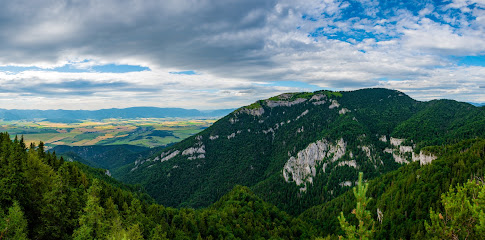
OUTLET GALÉRIA - secondhand Martin - veľkoobchod, maloobchod, online
OUTLET GALÉRIA in Sučany offers a unique shopping experience with stylish secondhand clothing, perfect for fashion enthusiasts and eco-conscious travelers.

Tesco
Explore the best of local and international products at Tesco in Turany, your go-to supermarket for all your shopping needs.

Coop Jednota
Discover the heart of Slovakian shopping at Coop Jednota in Belá-Dulice, offering local products and a friendly atmosphere.
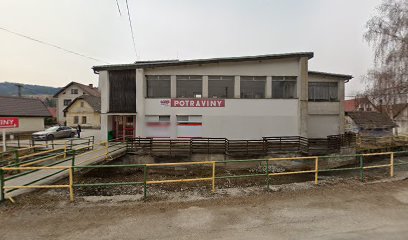
Monky darčeky
Experience the charm of Slovakia at Monky darčeky, where unique gifts and local crafts come to life in the heart of Ružomberok.

Brxa Martin
Discover the rich Slovak culture at Brxa Martin, a unique store in Turany offering authentic crafts and local delicacies.

UNI FRESH
Experience the flavors of Slovakia at UNI FRESH, your go-to grocery store in Turany for fresh produce and local delicacies.

U Ježibabky
Experience the essence of Slovakia at U Ježibabky, a charming espresso bar in the heart of Vlkolínec, offering local treats and handcrafted souvenirs.

vinylo.sk
Explore Vinylo.sk in Dolný Kalník for an unforgettable musical journey through vinyl records, CDs, and DVDs in a cozy atmosphere.

Salaš Nolčovo
Discover the essence of Slovak culture at Salaš Nolčovo, where fresh produce and local delicacies await your taste.

Darček ONE
Explore unique gifts and local crafts at Darček ONE, the charming gift shop in the heart of Martin, Slovakia.

Action Ružomberok
Explore a diverse range of goods at Action Ružomberok, your one-stop general store for DIY supplies, gifts, and home essentials in the heart of Slovakia.
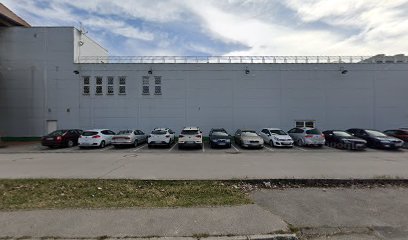
Darissa Collection
Explore the charm of Darissa Collection in Sučany - juh, where stylish women's clothing meets exceptional service in a delightful boutique setting.

COOP Jednota Martin, Spotrebné Družstvo
Explore local culture and flavors at COOP Jednota Martin, a charming general store in Belá-Dulice, Slovakia, offering fresh produce and unique souvenirs.

Essential bars & hidden hideouts
National Park Great Fatra
Discover the breathtaking landscapes and rich biodiversity of National Park Great Fatra, Slovakia's natural gem for outdoor adventures and tranquility.

Stránske Medvede • Grill & pub
Experience the best of Slovak cuisine at Stránske Medvede Grill & Pub, where nature and flavor unite in a cozy atmosphere.

The Legend Bar & Cafe
Experience the charm of Martin at The Legend Bar & Cafe, your go-to spot for drinks, snacks, and local vibes.

Včelín Music Bar
Discover the lively atmosphere and local music culture at Včelín Music Bar in Martin-Záturčie, where every night brings new sounds and vibrant social experiences.

Sommelier wine shop and bar in Martin
Experience the finest wines and a vibrant atmosphere at Sommelier Wine Shop and Bar in Martin, where every sip tells a story.

Elephant Bar
Discover the vibrant nightlife at Elephant Bar in Martin, Slovakia, where great drinks and a lively atmosphere await you.

pub Desina
Discover the vibrant atmosphere of Pub Desina, a must-visit bar in Martin, offering local brews, tasty snacks, and a taste of Slovakian hospitality.

pub Kostany
Discover the lively atmosphere and authentic Slovak cuisine at Pub Kostany, a must-visit destination in Košťany nad Turcom.

ŠPORT PUB
Discover the lively atmosphere and local flavors at ŠPORT PUB in Brezno-Mazorníkovo, a perfect place to unwind after your adventures.

Pohostinsvo Vyšná
Discover Pohostinsvo Vyšná, a charming bar in Liptovské Revúce, perfect for unwinding with local drinks and enjoying the stunning mountain views.

Hostinec LOCH
Enjoy a unique blend of traditional Slovak cuisine and warm hospitality at Hostinec LOCH, your go-to pub and inn in Sklabiňa.

Bar Hokejka
Experience the charm of Bystrička at Bar Hokejka, where local hospitality meets a cozy atmosphere and refreshing drinks.

Pub - Kráľová Taverna
Discover Kráľová Taverna in Brezno, where local culture meets cozy atmosphere and affordable indulgence.

Vonkajší bar pri chate Daria
Experience the scenic beauty and refreshing drinks at Vonkajší bar pri chate Daria, a must-visit bar in Ružomberok, Slovakia.

Stará krčma Šútovo
Discover the taste of Slovakia at Stará krčma Šútovo, where traditional cuisine meets a warm and inviting atmosphere.

Local Phrases about Velka Fatra National Park
-
- HelloAhoj
[ahoy] - GoodbyeZbohom
[zbohom] - YesÁno
[ah-no] - NoNie
[nye] - Please/You're welcomeProsím
[pro-seem] - Thank youĎakujem
[dya-koo-yem] - Excuse me/SorryPrepáčte
[pre-paach-te] - How are you?Ako sa máš?
[ah-ko sa mash] - Fine. And you?Dobre. A ty?
[dob-re. ah tee] - Do you speak English?Hovoríte po anglicky?
[ho-vo-ree-te po an-gleet-skee] - I don't understandNerozumiem
[ne-ro-zu-me-um]
- HelloAhoj
-
- I'd like to see the menu, pleaseChcel by som vidieť menu, prosím
[ch-tsel bee som vee-dyetch me-noo, pro-seem] - I don't eat meatNemám mäso
[ne-mam ma-saw] - Cheers!Na zdravie!
[na zdra-vee-ye] - I would like to pay, pleaseChcel by som zaplatiť, prosím
[ch-tsel bee som zap-la-teet, pro-seem]
- I'd like to see the menu, pleaseChcel by som vidieť menu, prosím
-
- Help!Pomoc!
[po-mots] - Go away!Choď preč!
[khod prech] - Call the Police!Volaj políciu!
[vo-lay po-lee-tsyoo] - Call a doctor!Volaj lekára!
[vo-lay le-ka-ra] - I'm lostStratil som sa
[stra-teel som sa] - I'm illSom chorý
[som kho-ree]
- Help!Pomoc!
-
- I'd like to buy...Chcel by som kúpiť...
[ch-tsel bee som koo-peet] - I'm just lookingLen sa pozerám
[len sa po-ze-ram] - How much is it?Koľko to stojí?
[kol-ko to stoyee] - That's too expensiveTo je príliš drahé
[to ye pree-lish dra-he] - Can you lower the price?Môžete znížiť cenu?
[mo-zhe-te znee-zheet tse-noo]
- I'd like to buy...Chcel by som kúpiť...
-
- What time is it?Koľko je hodín?
[kol-ko ye hod-een] - It's one o'clockJe jedna hodina
[ye ye-dna ho-dee-na] - Half past (10)Polovica po (10)
[po-lo-vee-tsa po] - MorningRáno
[ra-no] - AfternoonPopoludní
[po-po-lood-nee] - EveningVečer
[ve-cher] - YesterdayVčera
[v-che-ra] - TodayDnes
[dnes] - TomorrowZajtra
[zai-tra] - 1Jeden
[ye-den] - 2Dva
[dva] - 3Tri
[tree] - 4Štyri
[shty-ree] - 5Päť
[pyat] - 6Šesť
[shest] - 7Sedem
[se-dem] - 8Osem
[o-sem] - 9Deväť
[de-vyat] - 10Desať
[de-sat]
- What time is it?Koľko je hodín?
-
- Where's a/the...?Kde je...
[kde ye] - What's the address?Aká je adresa?
[ah-kah ye ah-dre-sa] - Can you show me (on the map)?Môžete mi ukázať (na mape)?
[mo-zhe-te mee oo-ka-zaht (na ma-peh)] - When's the next (bus)?Kedy je ďalší (autobus)?
[ke-dy ye dya-lshee (ow-to-boos)] - A ticket (to ....)Lístok (do ...)
[lees-tok (do)]
- Where's a/the...?Kde je...
History of Velka Fatra National Park
-
Velka Fatra National Park, nestled in the heart of Slovakia, has been a cradle of human activity since ancient times. Archaeological findings suggest that the area was inhabited by Celtic tribes during the early Iron Age. These early settlers took advantage of the region's rich natural resources, practicing agriculture and animal husbandry. Artifacts such as pottery, tools, and remnants of ancient dwellings provide a glimpse into their daily lives and cultural practices.
-
During the medieval period, Velka Fatra became strategically significant due to its challenging terrain and natural defenses. Several fortifications and castles were constructed to protect the region from invasions. The ruins of Blatnica Castle, dating back to the 13th century, stand as a testament to this era. Originally built as a royal fortress, Blatnica Castle later became the seat of local nobility. Its impressive structure and panoramic views of the surrounding landscape continue to attract visitors and history enthusiasts.
-
In the 16th and 17th centuries, Velka Fatra National Park was not immune to the turmoil caused by Ottoman incursions into Central Europe. The local population played a significant role in resisting these invasions, often seeking refuge in the park's dense forests and rugged mountains. The natural landscape provided a formidable barrier, aiding the efforts of local militias and rebels in their fight against the Ottomans. This period of resistance is etched into the cultural memory of the region, celebrated through folk tales and local traditions.
-
For centuries, the mountainous terrain of Velka Fatra has been ideal for pastoral activities, particularly sheep and cattle herding. The region's shepherding traditions have deeply influenced its cultural landscape. Traditional wooden shepherd huts, known as 'salas,' dot the hillsides, and the practice of seasonal transhumance—moving livestock between summer and winter pastures—remains an integral part of local life. These traditions are celebrated in annual festivals, where visitors can experience traditional music, dance, and cuisine.
-
Velka Fatra National Park played a crucial role during World War II, particularly during the Slovak National Uprising in 1944. The rugged terrain provided a strategic advantage for the resistance fighters, who used the park as a base for guerilla warfare against German forces. The remnants of bunkers, hideouts, and battle sites can still be found throughout the park, serving as poignant reminders of the bravery and resilience of the resistance fighters. Monuments and memorials commemorate this significant chapter in Slovakia's history.
-
Recognizing the ecological and cultural significance of the region, Velka Fatra was designated a national park in 2002. This designation aimed to protect its diverse flora and fauna, as well as its rich historical and cultural heritage. The park covers an area of approximately 404 square kilometers, featuring a variety of ecosystems, from dense forests and alpine meadows to limestone karst formations. Today, Velka Fatra National Park is a haven for outdoor enthusiasts, offering opportunities for hiking, wildlife observation, and cultural exploration.
Velka Fatra National Park Essentials
-
Velka Fatra National Park is located in central Slovakia. The nearest major city is Banská Bystrica, approximately 40 kilometers away. The closest international airport is in Bratislava, about 200 kilometers from the park. From Bratislava, you can take a train or bus to Banská Bystrica, and then a local bus or taxi to the park. Alternatively, you can rent a car for a more flexible journey.
-
Transportation within Velka Fatra National Park is best done by car, as it provides the most flexibility to explore different areas. There are also local buses that connect some of the villages within the park, but they may not run frequently. Taxis are available but can be expensive. For those who enjoy cycling, bike rentals are available in some areas and can be a great way to explore the park's trails.
-
The official currency in Slovakia is the Euro (EUR). Credit cards are widely accepted in hotels, restaurants, and larger shops, but it is advisable to carry some cash, especially when visiting smaller villages or rural areas. ATMs are available in nearby towns like Banská Bystrica and Ružomberok.
-
Velka Fatra National Park is generally a safe destination for tourists. However, it is always wise to take standard precautions. Keep an eye on your belongings, especially in crowded areas, and avoid walking alone at night in unfamiliar places. There are no specific high-crime areas targeting tourists within the park.
-
In case of an emergency, dial 112 for immediate assistance. There are medical facilities in nearby towns such as Banská Bystrica and Ružomberok. It is highly recommended to have travel insurance that covers medical emergencies. For minor health issues, there are pharmacies in the nearby towns where you can purchase over-the-counter medications.
-
Fashion: Do wear comfortable and weather-appropriate clothing, especially suitable for hiking. Avoid wearing overly revealing clothing. Religion: Do respect local customs and traditions, especially in religious sites. Public Transport: Do be respectful and considerate to other passengers. Don't play loud music or talk loudly on public transport. Greetings: Do greet people with a friendly 'Dobrý deň' (Good day). A handshake is also customary. Eating & Drinking: Do try local Slovak delicacies and traditional foods. Don't refuse hospitality, as it can be considered impolite.
-
To experience Velka Fatra National Park like a local, consider visiting during the off-peak seasons for a quieter experience. Engage with locals in the villages to learn about their way of life and local traditions. Don’t miss trying 'bryndzové halušky,' a traditional Slovak dish made from potato dumplings and sheep cheese. For a unique experience, take a guided tour to learn more about the park's flora, fauna, and history.
Nearby Cities to Velka Fatra National Park
-
Things To Do in Banská Bystrica
-
Things To Do in Žilina
-
Things To Do in Zakopane
-
Things To Do in Trenčín
-
Things To Do in Poprad
-
Things To Do in Bielsko-Biala
-
Things To Do in Ostrava
-
Things To Do in Salgotarjan
-
Things To Do in Trnava
-
Things To Do in Krakow
-
Things To Do in Vac
-
Things To Do in Gliwice
-
Things To Do in Olomouc
-
Things To Do in Eger
-
Things To Do in Prešov












